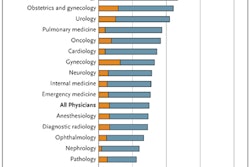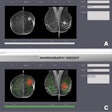President Barack Obama's proposed 2013 U.S. budget would save Medicare and Medicaid nearly $5 billion over the next decade -- in part by requiring prior authorization for advanced diagnostic imaging services.
The $4 trillion budget also includes healthcare cost-cutting measures such as penalties for failure to use electronic health records and updated payments to "more appropriately account" for the use of advanced imaging.
Medicare spending for imaging services paid for under the physician fee schedule has grown dramatically over the past decade, due to an increase in the number and intensity of these services, the Department of Health and Human Services (HHS) wrote in a brief. Although HHS acknowledged that this growth has slowed in recent years, it emphasized that the Medicare Payment Advisory Commission (MedPAC) has stated that imaging services may be "mispriced" and has supported Medicare payment changes for high-cost capital imaging equipment.
Therefore, beginning in 2013, the Obama administration's budget would implement a payment reduction for advanced imaging equipment to account for "higher levels of utilization of certain types of equipment." The move would save $820 million over 10 years.
Radiology advocates were quick to express their opposition to the new budget. Obama's proposals are remnants of those from last year's presidential budget proposal, which were shown by the American College of Radiology (ACR) and others to be bad policies that will cause more harm than good, said ACR spokesperson Shawn Farley.
"Prior authorization will not produce savings for Medicare once all fees and charges from the radiology benefit management firms are included," Farley told AuntMinnie.com via email. "The utilization rate assumption called for by the administration last year was shown to be way out of touch with what is actually happening in clinical practice nationwide. Mandatory accreditation of all imaging facilities and use of computerized, appropriateness criteria-based decision-support systems have been shown to be far better options in regard to appropriate imaging utilization and these paths do so without interfering in the doctor-patient relationship."
On February 13, the Medical Imaging and Technology Alliance (MITA) also announced its opposition to the new budget, stating that it would harm patient access to medical imaging and impede the creation of jobs in advanced manufacturing.

















